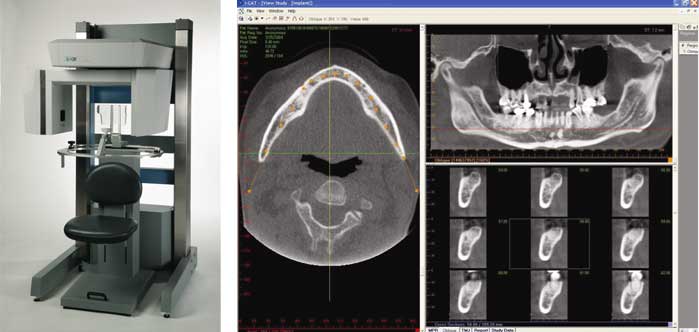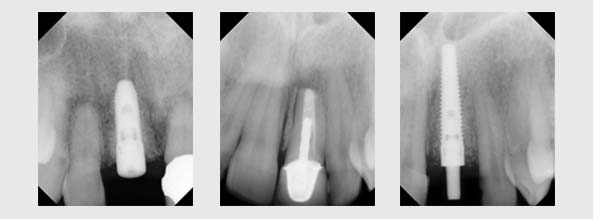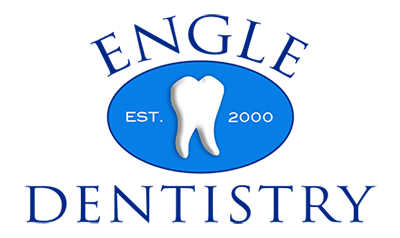Dental Implants
A dental implant is made from Titanium and acts as an artificial tooth root that is placed into your jaw bone to secure a removable appliance or to replace tooth or bridge. Dental implants provide a predictable option for patients that have lost teeth due to periodontal disease, an injury, or failed root canals.
Types of Dental Implants
Endosteal (in the bone): Endosteal implants are used more commonly than any other type of dental implant. Each implant normally holds one prosthetic teeth. However, when securing a dental appliance, you do not have to use as many implant fixtures unless the final restoration is secured and screwed into place. This final restoration will determine the number of fixtures that would be recommended.
Subperiosteal (on the bone): These are placed on top of the jaw bone with the metal framework's posts protruding through the gum to hold the prosthesis. These types of implants are used for patients who are unable to wear conventional dentures and who have minimal bone height. Subperiosteal implants are not used as commonly anymore.
8 Implants to secure upper FIXED appliance (All Ceramic)

In-office Dental CT scan. It takes less than 8 seconds to produce a high quality image

Fractured tooth #8. Replaced with a dental implant


Are you a Candidate for Dental Implants?
The ideal candidate for a dental implant is in good general and oral health. However, Diabetes, Osteoporosis, and heavy smoking are only relative contraindications to the short- and long-term success of implants. More importantly, the amount and quality of jaw bone needs to be able to support the implant. Over the last few years, hospital quality CT images can be achieved in the dental office with extremely low radiation and minimal exposure times.
Dental implants are intimately connected (oseointegration) to the underlying bone in the mouth. Since periodontists are the dental experts of soft-tissue management and bone regeneration, they provide a key component of your dental implant team. Not only do periodontists have experience working with other dental professionals, they also have the special knowledge, training and facilities that help achieve the best functional and esthetic outcomes. A general dentist and periodontist will work together to make your dreams come true.
What is a Dental Implant Procedure Like?
- Replacing a Single Tooth — If you are missing a single tooth, one implant and one crown can provide a final solution that can be flossed and brushed just like natural teeth.
- Replacing Several Teeth — If you are missing several teeth, implant-supported bridges can replace them (one implant per missing tooth vs building a true implant bridge by not using one implant per missing tooth).
- Replacing All of Your Teeth — If you are missing all of your teeth, an implant-supported full bridge (fixed, non-removable) or full denture (removable by using little retentive snaps. This option would require less implants and could still provide adequate retention of the appliance during normal function).
- Sinus Augmentation — when you need an upper posterior implant and the sinus dropped down closer to the ridge. A key to implant success is the quantity and quality of the bone where the implant is to be placed. The upper back jaw has traditionally been one of the most difficult areas to successfully predict if dental implants can be placed without the need for bone preparation procedures (due to insufficient bone quantity and quality and the close proximity to the sinus). Sinus augmentation can help correct this problem by raising the sinus floor and re-growing the bone for the placement of dental implants.
- Ridge Modification — Deformities in the upper or lower jaw from previous extractions, genetics, or even trauma can leave you with inadequate bone in which to place dental implants. To correct the problem, the gum is pushed back from the ridge to expose the bony defect. The defect is then filled with bone (Allograft) or bone substitute (Xenograft or synthetics) to build up the ridge. Ridge modification has been shown to greatly improve the final appearance and increase your chances for the long-term success of the implants. In the recent years, the use of Biologics (natural chemicals that aid in the growth of bone) has decreased the healing times required to place the implant as well as increases the predictability of the amount and quality of bone that can be re-grown.
What Can I Expect After Receiving a Dental Implant?
As you know, your own teeth require conscientious at-home oral care and regular dental visits. Dental implants are like your own teeth and will require the same care. In order to keep your implant clean and plaque-free, brushing and flossing still apply!†It is recommended to have a yearly radiograph taken when at your regular hygiene appointment. If a small problem arises, it is always more predictable if caught early.
After treatment, your periodontist will work closely with you and your dentist to develop the best care plan for you. Periodic follow-up visits will be scheduled to monitor your implant, teeth and gums to make sure they are healthy.
